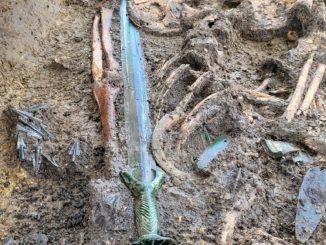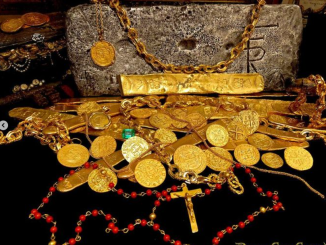This limestone sculpture, created for the Roman Emperor Tiberius Claudius (AD 41-54), was excavated at a site near the Temple of Dendera in Qena.
The sphinx statue was excavated near the Dendera temple, Qena, Egypt. (Photo: AFP/TTXVN)
According to the Vietnam News Agency correspondent in Cairo, Secretary General of the Supreme Council of Antiquities of Egypt Mostafa Waziry said on March 6 that a country’s archaeological delegation discovered a sphinx statue dating back to the Roman period in Qena province. belongs to Upper Egypt.
This limestone sculpture, created for the Roman Emperor Tiberius Claudius (AD 41-54), was excavated at a site near the Temple of Dendera in Qena.
An Egyptian archaeological delegation led by former Egyptian Minister of Antiquities and professor of archeology at Ain Shams University, Mamdouh el-Damaty, found the statue at the excavation site of a temple dedicated to the god Horus. , built east of the Dendera Temple during the Roman period.
In addition to this statue, archaeologists also found a stele engraved with ancient Egyptian hieroglyphs and Demotic characters (a common Egyptian script used in the first millennium BC) at the bottom of the slab. beer.
The sphinx statue was excavated near the Dendera temple in Qena, Egypt. (Photo: AFP/TTXVN)
The team also excavated the remains of a limestone maqsura (closed space) with two floors, inside which was a water tank made of red bricks covered with mortar. This structure is believed to date back to the Byzantine period.
The archaeological mission began excavation work at the above site last February with the help of radar detectors to search for empty spaces and Osirian-style corridors at Dendera Temple and survey from school as well as radio in the eastern area of the temple wall in front of the Isis gate.
The surveys were carried out in collaboration with a team of experts from the National Research Institute for Astronomy & Geography.




